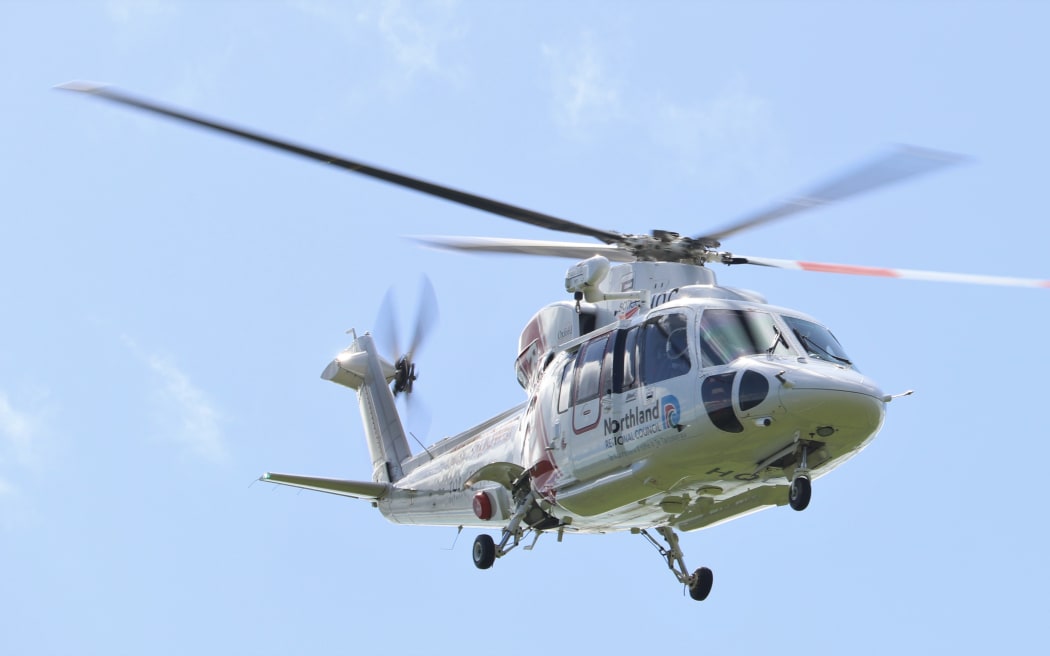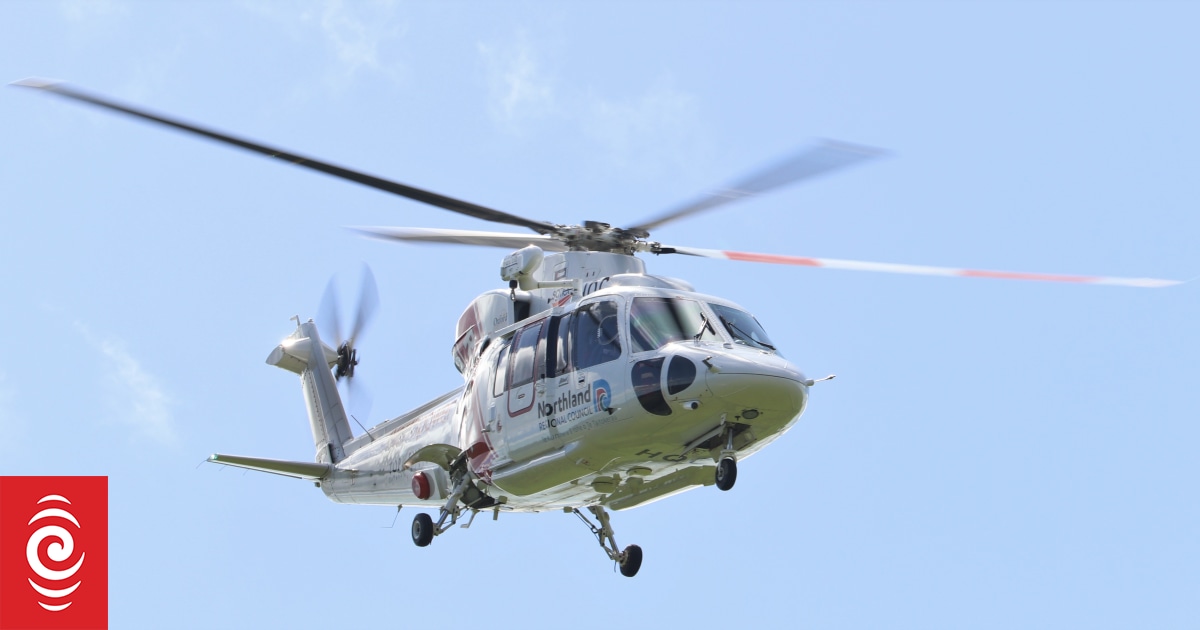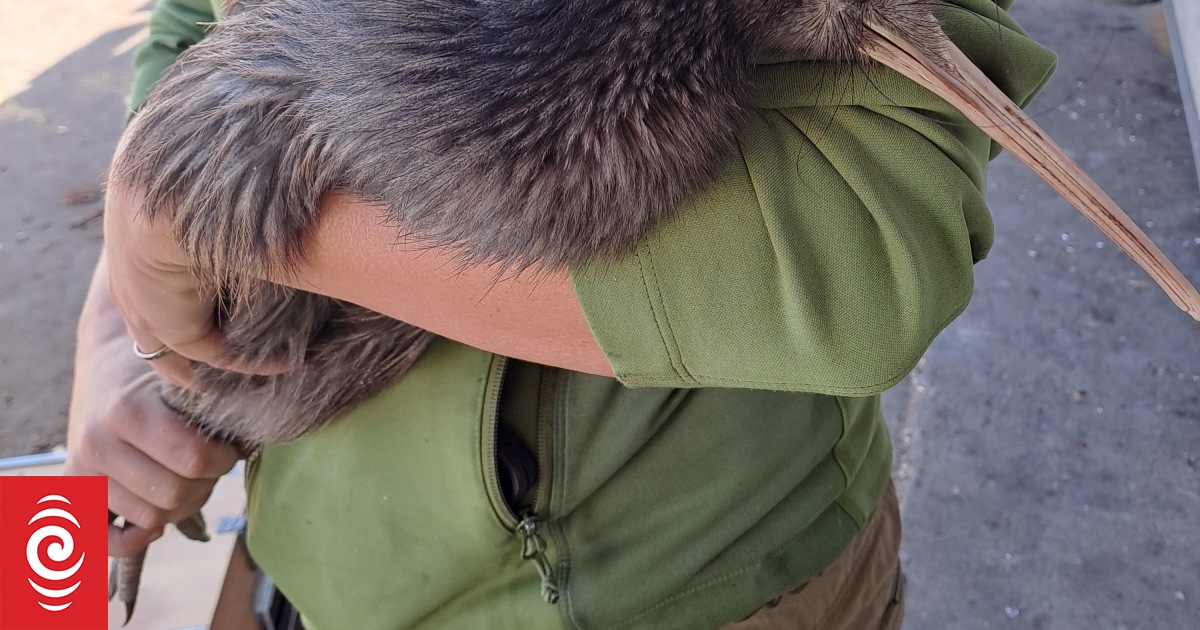
The Northland Rescue Helicopter currently gets about 15 percent of its funding from the community via donations and a ratepayer levy.
Photo: Peter de Graaf
A proposal to ditch ratepayer funding for the Northland Rescue Helicopter and other emergency services has sparked a record number of submissions to the Northland Regional Council.
As of Thursday morning, the council had received 1740 submissions on its 2024-34 Long-Term Plan, a record for the Whangārei-based council.
At least 1200 of those are related to the emergency services levy, and the vast majority of those are understood to oppose the council’s proposal.
Currently the regional council collects about $12 per household per year for its emergency services fund.
About half of that, $535,000, goes to the Northland Rescue Helicopter, while the rest is split among other volunteer organisations such as surf lifesaving and Far North Radio and Sea Rescue.
The Northland Regional Council is proposing to hold rates rises down to 3 percent – which would see its services trimmed to “the bare minimum” – or 11 percent, which is still low compared to other councils.
However, both of those options involve dropping “non-core” services, such as sports facilities and emergency services funding.
The council says it is pushing back against central government imposing ever more costs on ratepayers, and wants Te Whatu Ora/Health NZ to increase its funding for the rescue helicopter.
‘Fair to say people are not happy’
Many Northlanders volunteering in emergency services are aghast, however.
Ruawai volunteer firefighter Anthony Blundell said the regional council had “misread the room”.
“It’s really surprised a lot of people why they’d even go down this path, saying it’s not their core business when Civil Defence sits under NRC [Northland Regional Council] core business. Who do they think turn up to Civil Defence incidents? So I find that quite ironic.”
Blundell, who is also an ambassador for the rescue helicopter, said the chopper was called out to Ruawai just last week when a school bus and a car collided.
“Most fortunately there were no very serious injuries. The Northland Rescue Helicopter was on the scene and they had their other helicopter on call in Whangārei, waiting if it was required. That was just great to know, because it could have been a really serious incident.”
Blundell said many parents at the crash scene asked him why the council was planning to drop its funding.
“I can’t really use the expletive that most people used, but fair to say people are not happy,” he said.
Northland Federated Farmers president Collin Hannah, who had also made a submission, said the helicopter was a “Northland lifeline”.
The idea that the government would step in to fill the funding gap was ludicrous, given the current government’s cost-cutting drive.
While rescue helicopters played a vital role in regions with spread-out populations such as Northland, it was a misconception that the service benefited mainly rural people.
“It’s bigger than that. I don’t think people in Northland realise just how much our urban communities depend on that chopper as well. If you were to have, for example, an aneurism in the brain, the only place that can do surgery is Auckland, and the sooner you get there the better.”
Kamo Intermediate teacher Monique Bradley was 18 years old when a horse rolled on top of her, leaving her with a brain bleed and a broken spine.
She was airlifted to Whangārei Hospital, and eventually learned to walk again and recovered to the point where she was able to qualify as a teacher.
Bradley doubted she would have survived a trip in the back of an ambulance on the winding, corrugated roads between isolated Whananaki Beach and Whangārei.
She had also made a submission calling for the emergency services rate to be retained.
“It really hurts the NRC is proposing to cut the funding. If this is to happen it’s going to have a massive effect on Northlanders,” she said.
Govt already provides 86% of funding for emergency ambulance helicopters – minister
Regional Council deputy chair Tui Shortland said the council was pushing back against the government’s increasing demands on struggling ratepayers – especially in a region like Northland, where the amount people could pay was limited.
“We believe that the Ministry of Health is in fact responsible for some of the emergency services we have been funding – and in this current time, in one of the most impoverished regions in the country, we need to question the government,” she said.
“We are going to do this via our long-term plan process, while we have an open discussion with our ratepayers.”
The rescue helicopter service was required to demonstrate community support, but that did not have to come from rates, Shortland said.
Councillors were expecting a lot of submissions, and were looking forward to reading, and hearing, what Northlanders had to say, she said.
Meanwhile, Paul Ahlers, chairman of the Northland Emergency Services Trust, which operates the helicopters, said 85 percent of the service’s funding already came from Te Whatu Ora and ACC.
He wanted to see the trust remain a community organisation, rather than being wholly government funded.
Ahlers said losing ratepayer funding would not ground the chopper but it would put the service under great strain – especially because the trust would have just three months to make up for a $500,000 shortfall.
He believed the annual ratepayer contribution was working well.
“It’s a system that we actually think is really effective, because it allows us to reach every household in Northland, and allows Northlanders to just give a little bit towards the cost of running what is an essential service,” Ahlers said.
Associate Health Minister Casey Costello, who is responsible for emergency helicopter services, said what the Northland Regional Council did around its emergency services levy was a matter for the council and the local community to decide.
However, she said the government already provided 86 percent of funding for emergency ambulance helicopters around the country – $128 million this financial year – via Health NZ and ACC.
This was a big shift from 20 years ago, when air ambulances were mainly funded by communities.
Despite that, there was still a strong sense of community ownership over local emergency helicopter services, given the long-term relationship and at times lifesaving service they provided, Costello said.
Feedback on the Northland Regional Council’s Long Term Plan closes today (Friday) with oral submissions to be heard on 8 May and a decision due in June.




